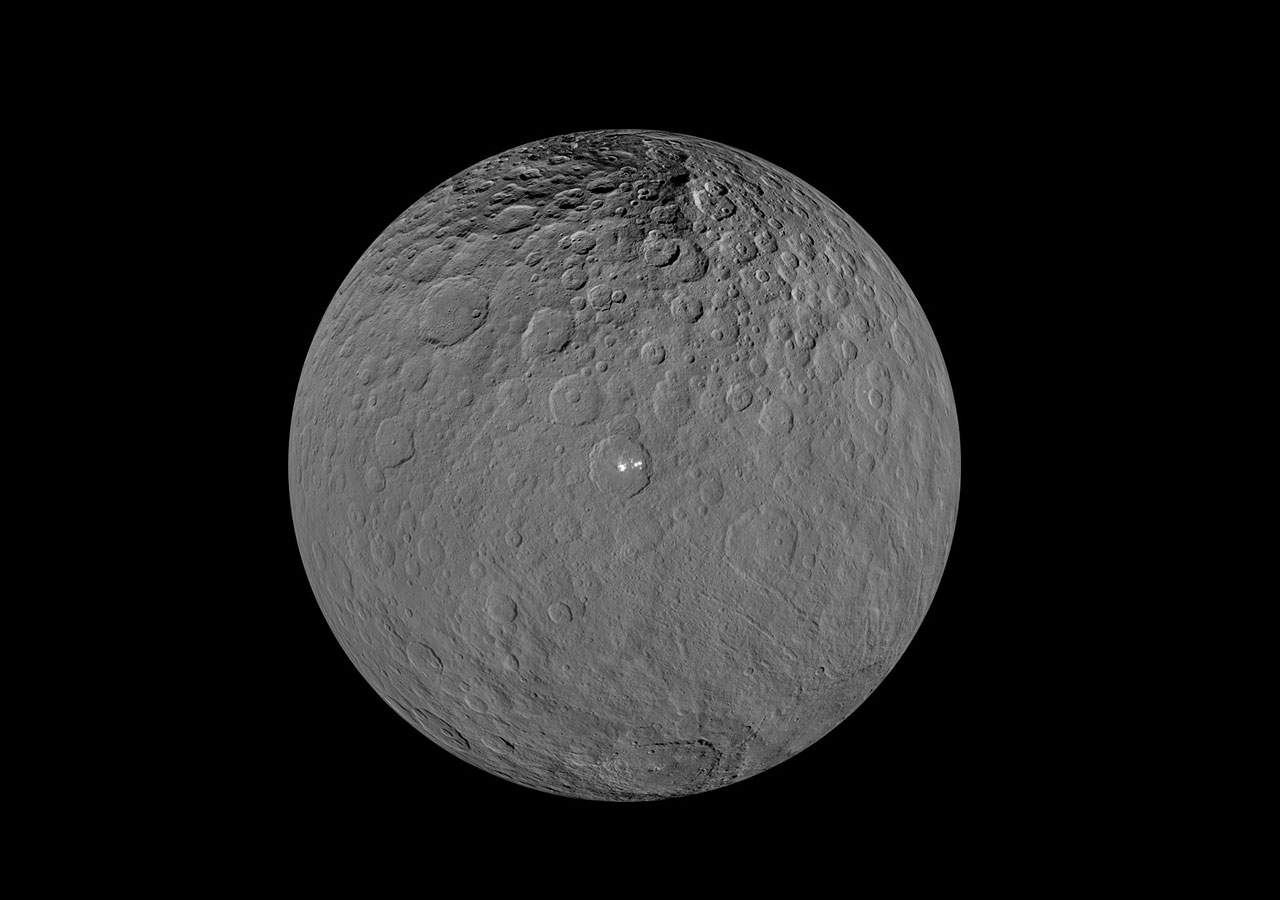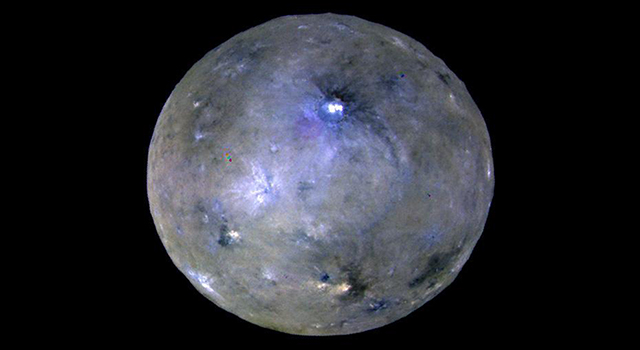About Ceres
Ceres was the first object discovered in the main asteroid belt and is named for the Roman goddess of agriculture. Italian astronomer Father Giuseppe Piazzi spotted the object in 1801. Ceres was initially classified as a planet and later classified as an asteroid as more objects were found in the same region. In recognition of its planet-like qualities, Ceres was designated a dwarf planet in 2006 along with Pluto and Eris.

NASA's Hubble Space Telescope observations in 2003 and 2004 of Ceres as it rotated demonstrated that is a nearly spherical body. Ceres is approximately 585 miles (940 kilometers) across. Ceres comprises 35 percent of the main asteroid belt's total mass.
Before Dawn reached Ceres, there were already signs that it contains large amounts of water ice beneath its surface. First, Ceres’ low density indicates it is about 25 percent ice by mass, which makes it the most water rich body in the inner solar system after Earth (in absolute amount of water). Also, scientists using the Herschel Space Observatory in 2012 and 2013 found evidence for water vapor on Ceres. The vapor was probably produced by ice near the surface sublimating (transforming from solid to gas). Pre-Dawn models suggested Ceres' water would be in the form of an icy layer wrapped around a rocky mantle. Observations by NASA's Hubble Space Telescope confirmed that model.
Dawn's Accomplishments at Ceres
Dawn acquired all data needed to fulfill its original objectives at Ceres by the middle of 2016. Its global shape, mean density, surface morphology, mineralogy, elemental composition, regional gravity, and topography have been acquired at resolutions exceeding all requirements.

Visible imaging gathered from the mission revealed a heavily cratered, but globally homogeneous surface punctuated by bright features. These are often referred to as "bright spots" and are deposits of carbonates and other salts. Global mapping of the surface revealed a complex landscape with both young and older terrains. Multiple lines of evidence, including hydrogen measurements, flow features, and direct identification, indicate abundant ice at high latitudes. However, the retention of craters up to 170 miles in diameter argues for a strong crust, dominated by hydrated salts, rocks, and clathrates (a compound in which gas molecules are trapped in a cage of water molecules). Gravity and topography data returned by Dawn further indicate Ceres’ internal density increases with depth. This is evidence for internal differentiation resulting from the separation of the dense rock from the lower density water-rich phases in Ceres’ early history. The rock settled to form an internal mantle overlain by the water-rich crust. Internal differentiation is a feature typical of small planets like Ceres and Vesta that sets them apart from their asteroid neighbors.
Dawn also returned evidence for recent and potentially ongoing activity in several places on Ceres. This is a remarkable discovery considering Ceres’ relatively small size, its cold environment, and its limited heat budget, which would have caused it to freeze quickly. The recent activity points to the role of salts in promoting long-term geological activity in water-rich bodies by depressing the freezing temperature of water and thus sustaining liquid. These unexpected discoveries are stimulating new thinking on the chemical and physical evolution of ice-rich bodies, for example some of the icy moons of the giant planets.
Finally, the discovery of ammonia on Ceres suggests its materials, or even Ceres itself, came from the outer solar system, providing additional evidence that the early solar system went through one (or several) reshuffling events before reaching its current architecture.
Mission Events
Sept. 27, 2007: Launch
Feb. 17, 2009: Mars Gravity Assist
July 16, 2011: Vesta Arrival
Sept. 5, 2017: Vesta Departure
March 5, 2015: Ceres Arrival
June 2016: End of prime mission
July 2016: Start of first extended mission
October 2017: Start of second extended mission
Nov. 1, 2018: End of Mission





